Telmipres 80 | Tablet | 14 pcs
৳ 154.00
Brand Name: Telmipres Tablet
Generic: Telmisartan
80 mg
Manufacturer: Incepta Pharmaceuticals Ltd.
Unit Price: ৳ 11.00 (28’s pack: ৳ 308.00)
Indications
Therapeutic Class
Pharmacology
Angiotensin II is formed from angiotensin I in a reaction catalyzed by angiotensin-converting enzyme (ACE, kininase II). Angiotensin II is the principal pressor agent of the renin-angiotensin system, with effects that include vasoconstriction, stimulation of synthesis and release of aldosterone, cardiac stimulation, and renal reabsorption of sodium. Telmisartan blocks the vasoconstrictor and aldosterone-secreting effects of angiotensin II by selectively blocking the binding of angiotensin II to the AT1 receptor in many tissues, such as vascular smooth muscle and the adrenal gland. Its action is therefore independent of the pathways for angiotensin II synthesis.
There is also an AT2 receptor found in many tissues, but AT2 is not known to be associated with cardiovascular homeostasis. Telmisartan has a much greater affinity ( > 3,000 fold) for the AT1 receptor than for the AT2 receptor.
Blockade of the renin-angiotensin system with ACE inhibitors, which inhibit the biosynthesis of angiotensin II from angiotensin I, is widely used in the treatment of hypertension. ACE inhibitors also inhibit the degradation of bradykinin, a reaction also catalyzed by ACE. Because telmisartan does not inhibit ACE (kininase II), it does not affect the response to bradykinin. Whether this difference has clinical relevance is not yet known. Telmisartan does not bind to or block other hormone receptors or ion channels known to be important in cardiovascular regulation.
Blockade of the angiotensin II receptor inhibits the negative regulatory feedback of angiotensin II on renin secretion, but the resulting increased plasma renin activity and angiotensin II circulating levels do not overcome the effect of telmisartan on blood pressure.
Dosage
Hypertension: Dosage must be individualized. The usual starting dose of Telmisartan tablets is 40 mg once a day. Blood pressure response is dose-related over the range of 20 to 80 mg
Most of the antihypertensive effect is apparent within 2 weeks and maximal reduction is generally attained after 4 weeks. When additional blood pressure reduction beyond that achieved with 80 mg Telmisartan is required, a diuretic may be added.
No initial dosage adjustment is necessary for elderly patients or patients with renal impairment, including those on hemodialysis. Patients on dialysis may develop orthostatic hypotension; their blood pressure should be closely monitored.
Cardiovascular Risk Reduction: The recommended dose of Telmisartan tablets is 80 mg once a day and can be administered with or without food. It is not known whether doses lower than 80 mg of telmisartan are effective in reducing the risk of cardiovascular morbidity and mortality.
When initiating Telmisartan therapy for cardiovascular risk reduction, monitoring of blood pressure is recommended, and if appropriate, adjustment of medications that lower blood pressure may be necessary.
Administration
Interaction
Contraindications
Side Effects
Pregnancy & Lactation
Precautions & Warnings
Use in Special Populations
Renal Impairment: Severe impairment or on haemodialysis: Initially, 20 mg once daily.
Hepatic Impairment: Mild to moderate: Max: 40 mg once daily. Severe: Contraindicated.
Overdose Effects
Symptoms: Hypotension, bradycardia, tachycardia, dizziness, acute renal failure and elevated serum creatinine.
Management: Supportive and symptomatic treatment. Induction of emesis and/or gastric lavage. Activated charcoal may be useful. Salt and volume replacement should be given immediately if hypotension occurs and place patient in supine position.
Storage Conditions
| Generic Name | Telmisartan |
|---|---|
| Size | 80 mg |
Only logged in customers who have purchased this product may leave a review.



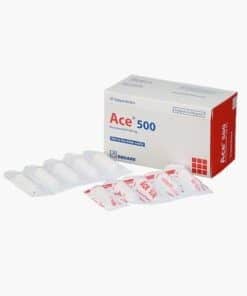
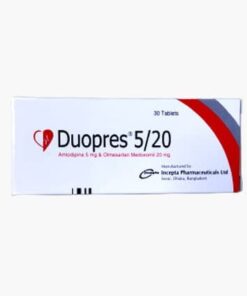
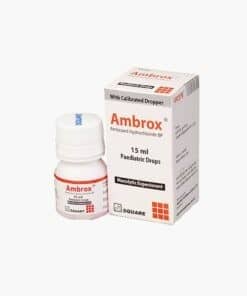
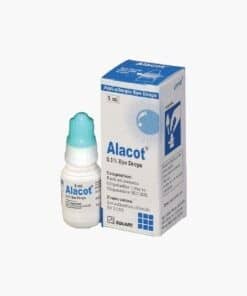

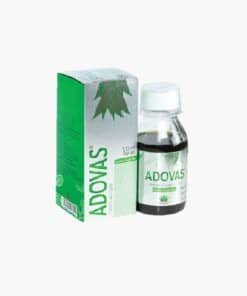
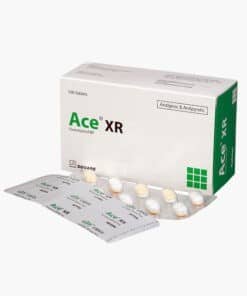

Reviews
There are no reviews yet.